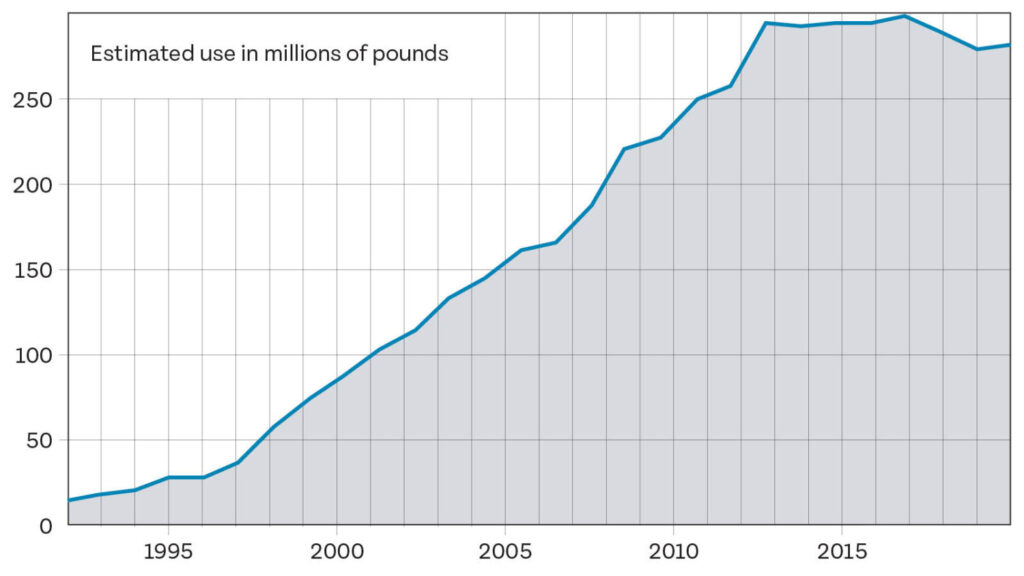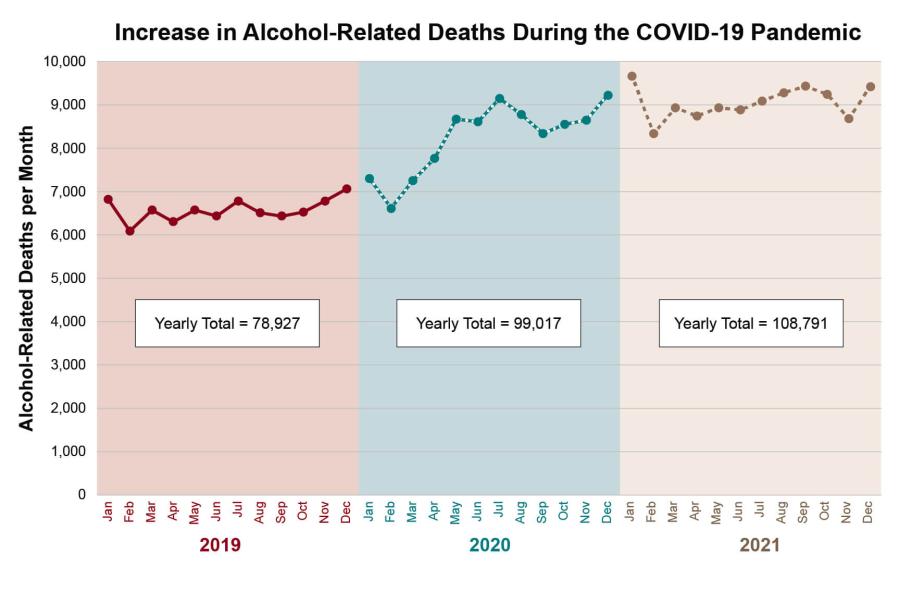Alcohol consumption has always been a significant part of social and cultural traditions, particularly among men. Whether it’s bonding over a beer after work, celebrating life’s milestones, or drowning sorrows in a bottle, alcohol often plays a starring role in the male experience. However, this seemingly benign relationship with alcohol has a dark side, one that became increasingly evident during the COVID-19 pandemic. The isolation, stress, and upheaval caused by the pandemic drove alcohol consumption to alarming levels, and for many men, these habits have lingered long after the lockdowns ended.
For men, the stakes are particularly high. Statistically, men drink more, experience more alcohol-related health consequences, and are less likely to seek help when their drinking spirals out of control. This article will explore the surge in alcohol use post-pandemic, the risks of even moderate drinking, and strategies for redefining our relationship with alcohol.
The Post-Pandemic Alcohol Boom
Men have always consumed alcohol at higher rates than women, and the pandemic only reinforced this trend. A 2023 study found that alcohol use in the United States increased significantly during the pandemic, with heavy drinking becoming particularly prevalent among men. While occasional drinking might seem harmless, the cumulative effects of increased consumption are wreaking havoc on men’s physical and mental health.
Several factors contributed to this rise in drinking among men. Stress and anxiety were among the most significant drivers. The pandemic created financial instability, health fears, and a sense of uncertainty that led many men to seek solace in alcohol. Social isolation compounded these issues. Men, who are less likely than women to seek emotional support or therapy, often turn to alcohol as a coping mechanism. Moreover, the closure of bars and restaurants shifted drinking into the home, normalizing higher consumption levels and creating an environment where alcohol was always within reach.
Cultural norms also played a role. Drinking has long been associated with masculinity, and for many men, abstaining from alcohol feels like a deviation from societal expectations. Whether it’s watching sports with friends, attending work happy hours, or celebrating achievements, alcohol is deeply embedded in male social rituals. The pandemic disrupted these rituals but did little to challenge the underlying association between alcohol and masculinity.
The Health Effects of Alcohol: Why Even One Drink Matters
While moderate drinking is often perceived as harmless—or even beneficial—scientific research tells a different story. Neuroscientist Andrew Huberman has been vocal about the underestimated risks of alcohol, emphasizing that even a single drink can have measurable negative effects on the brain and body. Alcohol impacts neurotransmitters like GABA and glutamate, which regulate relaxation and excitement. This disruption creates the temporary euphoria associated with drinking but also contributes to mood swings, impaired cognition, and anxiety.
For the brain, alcohol is particularly insidious. The hippocampus, responsible for memory formation, is highly sensitive to alcohol. Even small amounts can impair the brain’s ability to consolidate short-term memories into long-term storage. Additionally, alcohol interferes with REM sleep, the restorative stage critical for mental and emotional well-being. Over time, poor sleep quality exacerbates stress, fatigue, and mental health issues.
The physical health consequences of alcohol are equally concerning. For men, alcohol is a known suppressor of testosterone, the hormone responsible for energy, muscle mass, and libido. Chronic drinking can lead to hypogonadism, a condition characterized by low testosterone levels and impaired fertility. Alcohol also takes a toll on the liver, which processes alcohol but struggles to keep up with excessive consumption. This can lead to conditions like fatty liver disease, alcoholic hepatitis, and cirrhosis. Alarmingly, alcohol is also a Group 1 carcinogen, linked to cancers of the liver, esophagus, colon, and more.
Hidden Toxins in Alcohol: What’s Really in Your Drink?
While the obvious risks of alcohol—like liver damage, mental health struggles, and testosterone suppression—are widely discussed, many men remain unaware of the hidden toxins lurking in their favorite drinks. Beyond the alcohol itself, many beers, wines, and spirits are contaminated with substances that can harm your health. For men aiming to prioritize wellness, understanding these hidden dangers is crucial.
Glyphosate and Pesticides: A Common Threat in Beer and Wine
Glyphosate, the active ingredient in the widely used herbicide Roundup, has been detected in many popular beers and wines. A 2019 report tested 20 beer and wine brands and found glyphosate in 19 of them, including well-known names like Budweiser and Coors.
Glyphosate exposure has been linked to several health issues, including:
- Hormonal Disruption: Glyphosate can mimic hormones and interfere with endocrine function, potentially reducing testosterone levels in men.
- Increased Cancer Risk: The International Agency for Research on Cancer (IARC) classifies glyphosate as a probable human carcinogen.
- Gut Health Damage: Glyphosate may harm the gut microbiome, which plays a crucial role in overall health, including mental well-being and immune function.

Many wines also contain residual pesticides from grapes treated during farming. Even organic wines aren’t entirely free from contamination, as environmental factors like water runoff can carry pesticides onto crops.
Estrogenic Compounds in Beer
For men, the presence of phytoestrogens (plant-based estrogens) in beer should be a significant consideration. Hops, a primary ingredient in beer, are rich in 8-prenylnaringenin, a potent phytoestrogen. While small amounts may not be harmful, regular beer consumption can potentially contribute to:
- Lower Testosterone Levels: Phytoestrogens may act as endocrine disruptors, throwing off the balance of testosterone and estrogen in the male body.
- Increased Risk of Gynecomastia: Commonly known as “man boobs,” this condition can be exacerbated by excessive phytoestrogen intake.
- Reduced Fertility: Hormonal imbalances caused by phytoestrogens can impact sperm production and overall reproductive health.
Additives and Synthetic Chemicals in Spirits
Spirits like vodka, whiskey, and tequila are often perceived as “cleaner” options, but they aren’t free from potential toxins either. Many mass-produced spirits contain:
- Caramel Coloring: Common in whiskey and rum, caramel coloring has been linked to increased cancer risk due to contaminants like 4-methylimidazole (4-MEI).
- Artificial Flavors: Found in flavored vodkas and liqueurs, these additives can contain chemical compounds that disrupt hormones or cause allergic reactions.
- Residual Solvents: Used during the distillation process, these chemicals can remain in trace amounts and contribute to liver toxicity.
Heavy Metals in Alcohol
A lesser-known issue in alcohol production is contamination with heavy metals like lead, arsenic, and cadmium. These can leach into beverages through industrial processing, old equipment, or contaminated water supplies. Heavy metal exposure can lead to:
- Neurotoxicity: Impaired cognitive function and increased risk of neurological disorders.
- Hormonal Disruption: Heavy metals can interfere with the body’s natural hormone production, including testosterone.
- Organ Damage: Long-term exposure can damage the kidneys and liver, compounding the risks already associated with alcohol.
The Reality of “Clean” Alcohols
While many brands market themselves as “clean” or “organic,” it’s essential to scrutinize these claims. Organic certification ensures that no synthetic pesticides or fertilizers are used, but it doesn’t guarantee freedom from all toxins, especially if the production environment is compromised.
For men prioritizing health, exploring truly clean alcohol options involves looking for:
- Certified Organic Labels: Ensure that no synthetic pesticides or herbicides are used.
- Minimal Ingredients: Choose spirits with simple ingredient lists and avoid heavily flavored or sweetened options.
- Transparent Brands: Look for companies that publish third-party testing results for contaminants like glyphosate or heavy metals.
Why Men Should Rethink Alcohol Choices
For men, the stakes are particularly high. Not only does alcohol itself suppress testosterone and increase inflammation, but the added toxins amplify these risks. Glyphosate in beer, estrogenic compounds in hops, and artificial additives in spirits can contribute to a cascade of health issues, from hormonal imbalances to liver damage.
Cutting back on alcohol—or choosing cleaner alternatives—isn’t just about avoiding a hangover. It’s about protecting your body from a barrage of toxins that work against your health and fitness goals. Whether you’re striving for better athletic performance, mental clarity, or hormonal balance, what’s in your drink matters just as much as how much you drink.
Alcohol and Mental Health in Men
The relationship between alcohol and mental health is complex and often self-perpetuating. While alcohol can temporarily alleviate stress or sadness, it ultimately exacerbates mental health issues. For men, who are statistically less likely to seek help for conditions like depression or anxiety, alcohol often becomes a crutch. However, this coping mechanism comes at a steep cost.
Alcohol is a depressant, meaning it slows down brain function. While this may create a temporary sense of calm, it ultimately leads to increased anxiety and depression. This creates a vicious cycle where men drink to escape negative emotions, only to find those emotions amplified when the alcohol wears off. Isolation during the pandemic compounded this issue. Many men began drinking alone, a behavior strongly associated with faster progression to alcohol use disorder (AUD) and greater mental health challenges.
Responsible Drinking vs. Abstinence
For those who choose to drink, understanding and adhering to safe drinking guidelines is crucial. The National Institute on Alcohol Abuse and Alcoholism defines responsible drinking as no more than four drinks in a single day and no more than 14 drinks per week for men. However, even these guidelines may underestimate the risks. Studies show that health issues like liver disease and cancer can develop at levels below these thresholds.
For many men, abstinence may be the healthiest choice. Movements like Dry January and Sober October have gained popularity, encouraging individuals to reevaluate their relationship with alcohol. Abstaining entirely eliminates the risks associated with drinking and often leads to improved sleep, energy levels, and mental clarity.
Redefining Masculinity and Changing Cultural Norms
Alcohol has long been a symbol of masculinity, but this narrative is changing. The rise of the sober curious movement is encouraging men to rethink their relationship with alcohol. By normalizing sobriety and promoting healthier alternatives, we can shift societal expectations around drinking.
Redefining masculinity involves challenging the cultural norms that equate alcohol consumption with strength, confidence, and camaraderie. It’s about creating a new narrative where health, self-awareness, and emotional intelligence are seen as hallmarks of true masculinity. This shift is not just about individual choices but about fostering a broader cultural change that prioritizes well-being over conformity.
A Path Forward for Men’s Health
The rise in alcohol use among men is a wake-up call. The pandemic revealed the fragility of our coping mechanisms and the need for healthier alternatives. While cultural norms around drinking are deeply entrenched, they are not immutable. By fostering awareness, embracing change, and supporting one another, we can redefine what it means to live well.
The journey starts with a simple but profound question: What role should alcohol play in your life? For many men, the answer lies not at the bottom of a glass but in reclaiming control over their health, happiness, and future.









